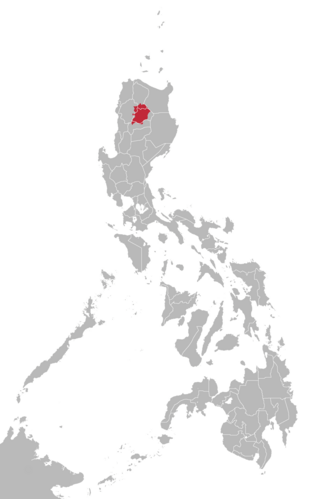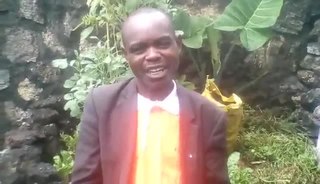Related Research Articles
Most languages of Europe belong to the Indo-European language family. Out of a total European population of 744 million as of 2018, some 94% are native speakers of an Indo-European language. Within Indo-European, the three largest phyla in Europe are Romance, Germanic, and Slavic; they have more than 200 million speakers each and together account for close to 90% of Europeans. Smaller phyla of Indo-European found in Europe include Hellenic, Baltic, Albanian, Celtic, and Armenian ; Indo-Aryan, though a large subfamily of Indo-European, has a relatively small number of speakers in Europe.
Luhya is a Bantu language of western Kenya.

Kalinga is a dialect continuum of Kalinga Province in the Philippines, spoken by the Kalinga people, alongside Ilocano. The Banao Itneg variety is not one of the neighboring Itneg languages.
Ngiri is a Bantu language closely related to Lingala.
Watiwa is a Rai Coast language of Papua New Guinea.
Central Tibetan, also known as Dbus, Ü or Ü-Tsang, is the most widely spoken Tibetic language and the basis of Standard Tibetan.
Yaka, also spelled Iaca and Iyaka, is a Bantu language spoken in the Democratic Republic of the Congo and Angola. There are two dialects, Yaka proper, which comprises 99% of speakers, and Ngoongo. The alleged varieties Pelende and Lonzo are political rather than ethnolinguistic entities.

Lega is a Bantu language, or dialect cluster, of the Democratic Republic of the Congo. There are two major varieties, Shabunda Lega and Mwenga Lega; Mwenga Lega, with about 10% of speakers, finds Shabunda difficult to understand. Kanu has been assigned a separate ISO code but is a dialect of Shabunda, and no more divergent than other dialects.
Ding is a Bantu language that is spoken in the Democratic Republic of Congo.
Ede is a dialect continuum of Benin and Togo that is closely related to the Yoruba language. The best-known variety is Ife.
Shi, or Nyabungu, is a Bantu language of the Democratic Republic of the Congo.
The Lega–Binja languages are part of the Bantu languages coded Zone D.20 in Guthrie's classification, specifically D.24–26, which according to Nurse & Philippson (2003) form a valid clade. According to Ethnologue, Bembe, which Nurse & Philippson were not sure belonged in its traditional group of D.50, is the closest language to Lega-Mwenga; Glottolog has it closest to Songoora. The resulting languages are:
Bembe (Kibeembe) is a Bantu language of Congo-Brazzaville. It is closely related to Kikongo.
Kayan is a dialect cluster spoken by the Kayan people of Borneo. It is a cluster of closely related dialects with limited mutual intelligibility, and is itself part of the Kayan-Murik group of Austronesian languages.
Lamaholot, also known as Solor or Solorese, is a Central Malayo-Polynesian dialect cluster of Flores, Indonesia. The varieties may not be all mutually intelligible; Keraf (1978) reports that there are 18 languages under the name.

Itneg is a South-Central Cordilleran dialect continuum found in the island of Luzon, Philippines. This language and Ilocano are spoken by the Itneg people in Abra.
Kimaragang (Marigang), Tobilung, and Rungus are varieties of a single Austronesian language of Sabah, Malaysia. The three varieties share moderate mutual intelligibility. Children are not learning it well in some areas.
Masela (Marsela) is the language of Marsela Island in southern Maluku, Indonesia. Regional varieties are distinct; Ethnologue counts it as three languages.

The Nyindu people, are an ethnic group predominantly found along the Ulindi River in the north, west, and south, as well as the Kilungutwe River, located in the Mwenga Territory in the southern part of South Kivu Province in the eastern region of the Democratic Republic of the Congo (DRC). The Nyindu people belong to the Bantu ethnic group and linguistic family, which is among the most populous and diverse ethnic groups in the South Kivu Province. They are known for their traditional agricultural practices, which include cultivating crops such as maize, cassava, and beans. They also engage in animal husbandry, particularly with cattle. The Nyindu are organized into clans, and each clan has a chief who serves as a leader and arbitrator.
References
- ↑ Bembe at Ethnologue (18th ed., 2015) (subscription required)
Mwenga Lega at Ethnologue (18th ed., 2015) (subscription required) - ↑ Jouni Filip Maho, 2009. New Updated Guthrie List Online